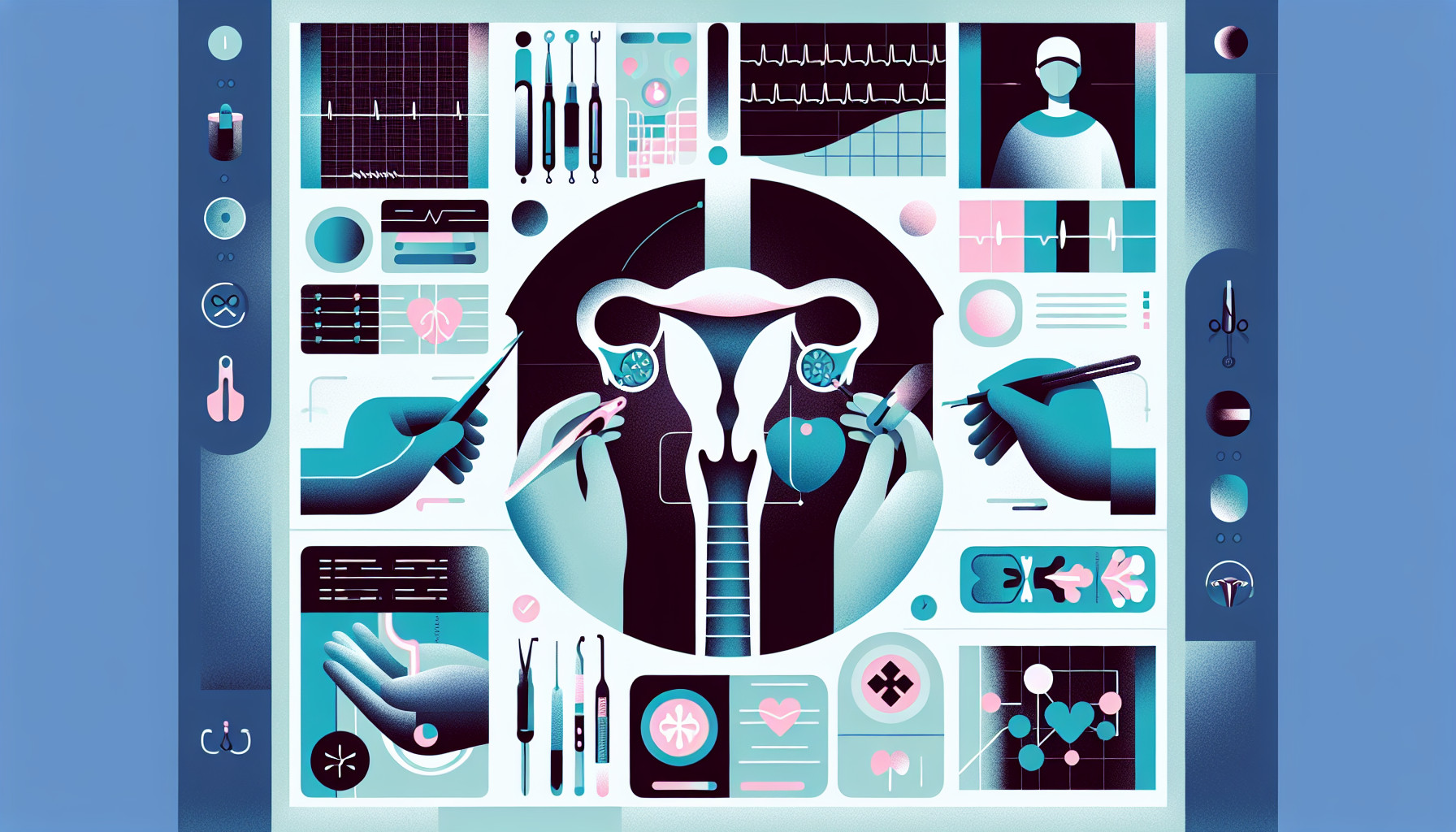Our Summary
This research paper discusses a study conducted in the Netherlands, which aimed to determine if combining an endometrial ablation procedure with the insertion of a certain type of intrauterine device (LNG-IUS) could reduce the need for hysterectomies in women suffering from heavy menstrual bleeding.
Endometrial ablation is a procedure that removes or destroys the lining of the uterus to combat heavy menstrual bleeding. However, between 12 and 25% of women who undergo this procedure are not satisfied after two years because of recurring bleeding or pelvic pain, with about 15% of these women ending up having a hysterectomy.
Inserting the LNG-IUS immediately after an endometrial ablation may help by deactivating any remaining untreated endometrium (the lining of the uterus) and/or inhibiting the regrowth of this tissue. It’s also thought that the device could prevent the uterine walls from sticking together, a potential side effect of endometrial ablation.
The study randomly assigned women to receive either the endometrial ablation alone or the ablation combined with the LNG-IUS. The researchers then tracked the rate of hysterectomies over the next two years, along with other factors like satisfaction, complications, and quality of life.
The aim is to provide doctors with better information about the best treatment options for women experiencing heavy menstrual bleeding.
FAQs
- What is endometrial ablation and why is it used?
- How might the insertion of a LNG-IUS device after endometrial ablation help reduce the need for hysterectomies?
- What were the main objectives and methods of the study conducted in the Netherlands regarding endometrial ablation and the LNG-IUS device?
Doctor’s Tip
One helpful tip a doctor might tell a patient about endometrial ablation is to discuss the option of combining the procedure with the insertion of an LNG-IUS to potentially reduce the need for a hysterectomy in the future. This combination treatment may help improve outcomes and satisfaction for women suffering from heavy menstrual bleeding. It’s important to have an open and honest conversation with your doctor about all available treatment options to find the best solution for your individual needs.
Suitable For
Women who are typically recommended for endometrial ablation are those who suffer from heavy menstrual bleeding (menorrhagia) and have not responded to other conservative treatments such as medication or hormonal therapy. Additionally, women who do not wish to have more children and are not candidates for or do not want a hysterectomy may also be recommended for endometrial ablation.
It is important to note that endometrial ablation is not suitable for women who have certain medical conditions such as uterine cancer, endometrial hyperplasia, or pelvic inflammatory disease. Women who have a uterine abnormality that would interfere with the procedure or those who are pregnant or planning to become pregnant in the future are also not typically recommended for endometrial ablation.
Overall, the decision to recommend endometrial ablation should be made on a case-by-case basis by a healthcare provider after a thorough evaluation of the patient’s medical history, symptoms, and treatment goals.
Timeline
Before endometrial ablation:
- Patient experiences heavy menstrual bleeding, which can lead to anemia, fatigue, and other symptoms.
- Patient consults with a gynecologist to discuss treatment options for their heavy menstrual bleeding.
- Gynecologist recommends endometrial ablation as a potential solution.
- Patient undergoes pre-operative evaluations and consultations to determine if they are a suitable candidate for the procedure.
After endometrial ablation:
- Patient undergoes the endometrial ablation procedure, which typically takes less than an hour and is performed on an outpatient basis.
- Patient may experience some cramping, spotting, or discharge in the days following the procedure.
- Patient follows post-operative care instructions provided by their healthcare provider, which may include avoiding strenuous activities and taking pain medication as needed.
- Patient attends follow-up appointments to monitor their recovery and assess the effectiveness of the procedure in reducing heavy menstrual bleeding.
- If the patient continues to experience heavy menstrual bleeding or other symptoms, further treatment options may be explored, such as additional procedures or medications.
- In some cases, if the endometrial ablation is not successful in alleviating symptoms, a hysterectomy may be recommended as a last resort.
What to Ask Your Doctor
Some questions a patient should ask their doctor about endometrial ablation include:
- What are the potential risks and complications associated with endometrial ablation?
- How successful is endometrial ablation in reducing heavy menstrual bleeding?
- What factors determine if I am a suitable candidate for endometrial ablation?
- What are the different types of endometrial ablation procedures available and which one would be most appropriate for me?
- What is the recovery process like after endometrial ablation and how long does it typically take?
- What are the chances of needing a hysterectomy after undergoing endometrial ablation?
- Are there any alternative treatments or therapies for heavy menstrual bleeding that I should consider before opting for endometrial ablation?
- Will I still be able to conceive and carry a pregnancy to term after undergoing endometrial ablation?
- Can I have the LNG-IUS inserted during or after the endometrial ablation procedure to potentially reduce the need for a hysterectomy?
- What are the long-term effects of combining endometrial ablation with the LNG-IUS and how does it compare to endometrial ablation alone in terms of effectiveness and satisfaction?
Reference
Authors: Oderkerk TJ, Beelen P, Geomini PMAJ, Herman MC, Leemans JC, Duijnhoven RG, Bosmans JE, Pannekoek JN, Clark TJ, Mol BWJ, Bongers MY. Journal: BMC Womens Health. 2022 Jun 27;22(1):257. doi: 10.1186/s12905-022-01843-6. PMID: 35761328
